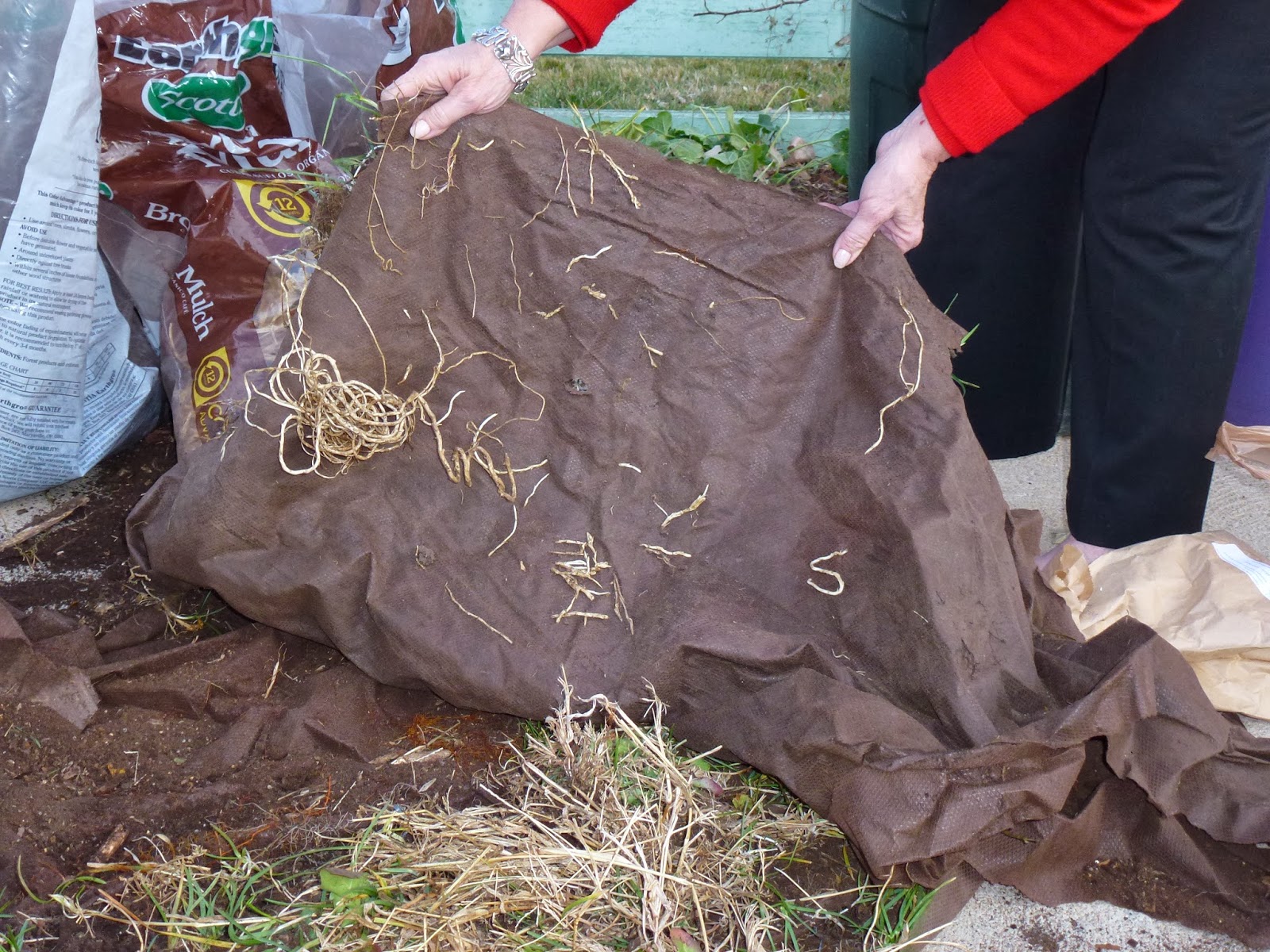We all want a good outcome in the garden or at the hair dresser. By good outcome I’m referring to healthy plants, pleasing blooms, and easy care. For a good hair outcome you’re on your own. Last time I wrote about achieving a soft, workable vegetable bed by applying or renewing the area with a 4 to 6 inch thick layer of organic mulch with materials like leaves, straw or greenery left over from the holidays. Even pine needles work, or take the direct route if you’re out of leaves and purchase some untreated burlap from a garden center or hardware store and tack it down over your beds. A blanket of mulch or burlap does wonders for your soil as it lays idle waiting for the spring wake up call to planting action. The goal is to prevent the repetitive freeze/thaw cycle which makes the soil crack, dry out and just plain difficult to work in for sowing seeds and transplanting. When you think about it, nature and forests mulch their own landscapes effortlessly with an ever present renewable supply of needles, leaves, plant roots and other materials creating organic layers that break down over time. You just need to pick up on nature’s template and begin or continue a mulch system in your neck of the woods.
 |
| Bark Mulch in Winter |
When and how landscape mulches will be used
determines the best type to use. Winter mulch primarily keeps the soil evenly
cool which prevents plants from heaving (rising up from their roots) which may
lead to damaged roots or plant death.
This is especially important on new plantings. The best time to apply winter mulch is after
the ground has frozen in the fall. It is okay to renew the mulch through the
winter months if it has blown away or is getting too thin.
 |
| Add Mulch in the Fall after the Ground has Frozen |
 |
| Mulch Protection on Fall Planted Roses |
The same materials that can be used for
vegetable beds can be used as winter mulch throughout the landscape – grass,
leaves, straw or pine needles, apply to a depth of 4 to 6 inches. Keep in mind that these types of mulches will
break down quickly so will need regular renewal. Shredded wood and bark mulches are also
excellent landscape mulch choices resulting in a uniform, finished appearance. Apply to a depth of 3 to 4 inches. Keep all mulch materials at least 6 inches
away from the base of woody plants to keep the bark dry.
 |
| Keep Mulch Away from Trees to Keep the Bark Dry |
Avoid using plastic mulches for permanent
use throughout the landscape. It doesn’t
allow water, light and air to pass through to the soil and roots. Lack of
oxygen and nutrients will negatively impact plant and root health. But plastic can be used temporarily each
spring to warm the soil in vegetable planting areas. Some vegetable gardeners
keep the plastic in place and cut holes where they want to place warm season
vegetables like tomatoes, peppers and squash.
 |
| Warming the Soil with Plastic over Vegetable Bed |
Use landscape fabric instead of plastic if
weeds are a concern, but it’s not foolproof by any means. I find that landscape fabrics are not an
effective weed barrier in the long term. Weeds are crafty and
opportunists. Soil finds its way onto
the fabric and weeds find another home on top of the fabric where their roots
take anchor. It’s much easier to pull
weeds from a deep mulch layer than ones attached to fabric.
 |
| Bindweed Roots Take Hold in Weed Fabric |
Like winter mulch, summer mulch has several
important functions for the ‘good garden outcome.’ Apply when soil temperatures begin to rise in
late spring. Mulch keeps soil
temperatures cooler in the severe heat of summer and reduces soil evaporation
so less water is needed. University
studies found that summer soil temperatures are reduced anywhere from 8 to 13
degrees when compared to bare soil.
Mulch improves the quality of the soil as
it breaks down over time, along with preventing a hard crust build up that can
result from water directly hitting and bouncing off the surface.
Keep in mind that when mulch decomposes
there can be temporary nutrient losses to the plants, mainly nitrogen loss. Leaves
that turn yellow are a sure sign of nitrogen deficiency so fertilizers are
recommended - usually two pounds per 100 square feet. Be careful not to over mulch,
especially with wood mulches. They can mat to the point of smothering young or
shallow roots. As mulch turns gray and
weathers over time, instead of piling new mulch on each and every year, fluff
it and turn it with a rake once or twice a year and only add new mulch every 2
to 3 years when it gets below the recommended 3-4 inch depth.
There are other types of inorganic or inert
mulch to consider using in your landscape.
Rocks, crushed stone, gravel and recycled rubber mulches are options for
rock gardens, patios and pathways.
 | |||
| Decorative Rocks Set off this Front Yard Perennial Bed |
Keep mulch on your mind and in your
landscape year round. Used properly and
to the correct depths your landscape outcome just might be nicer than your
hair!
No comments:
Post a Comment
Note: Only a member of this blog may post a comment.